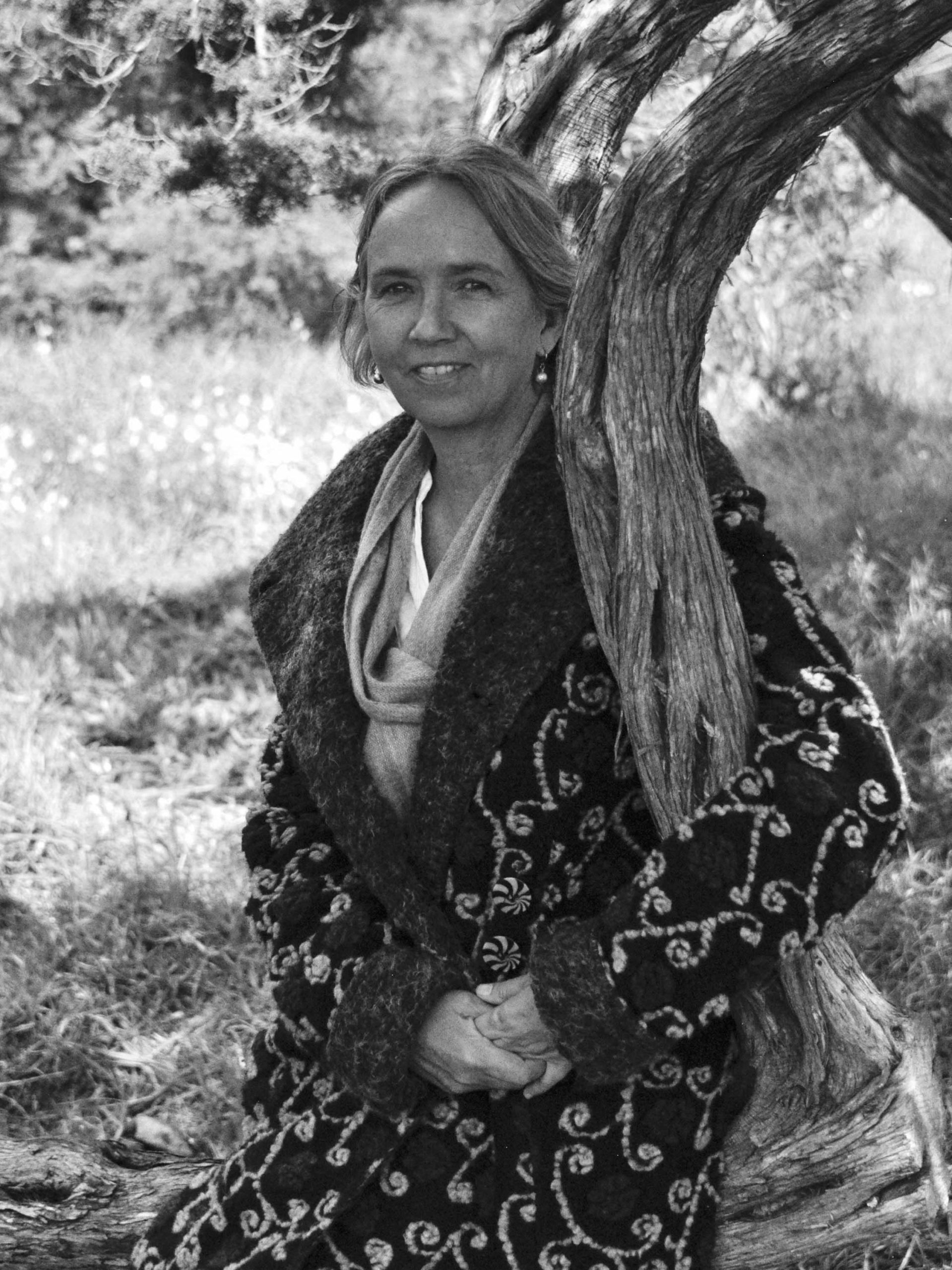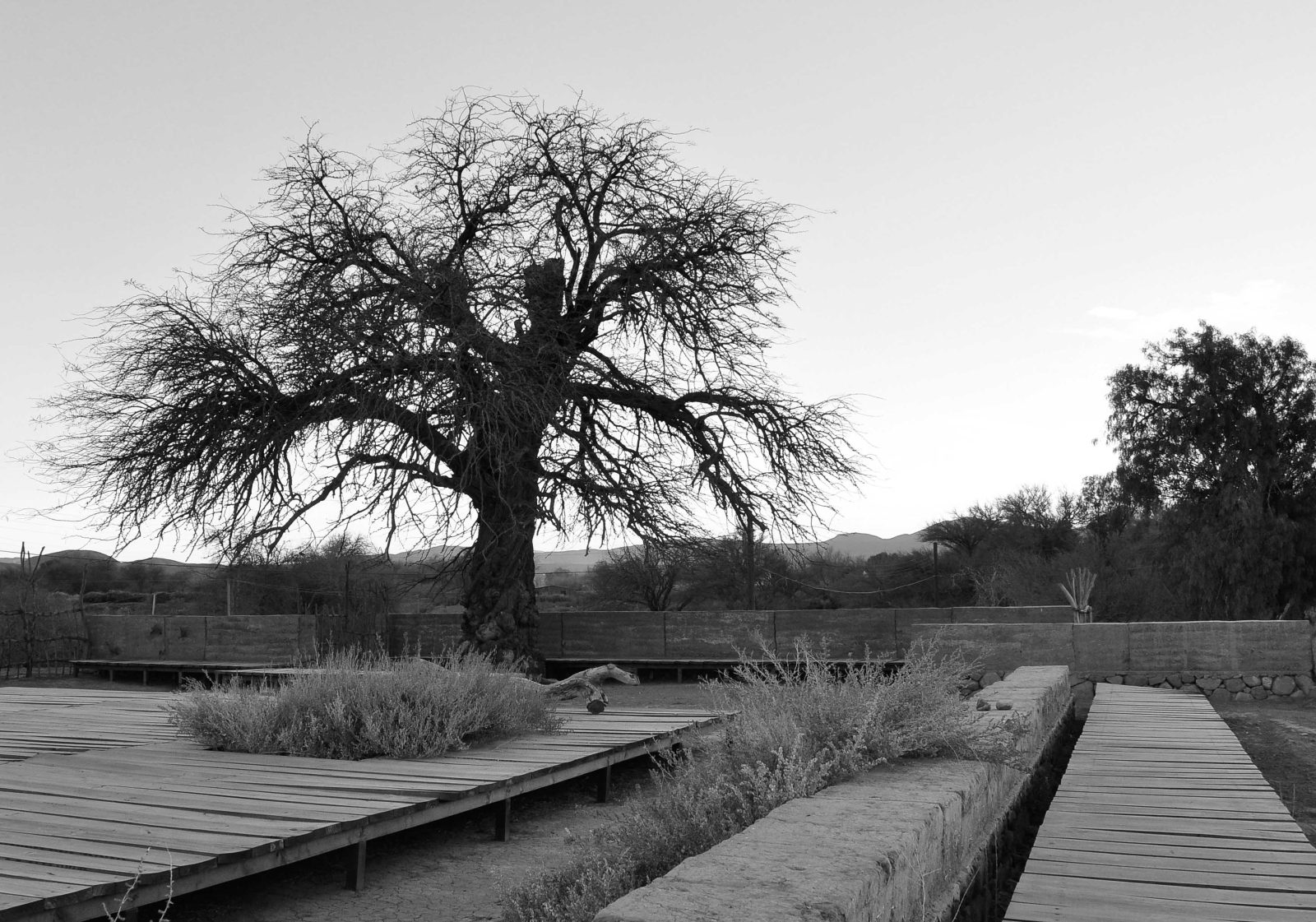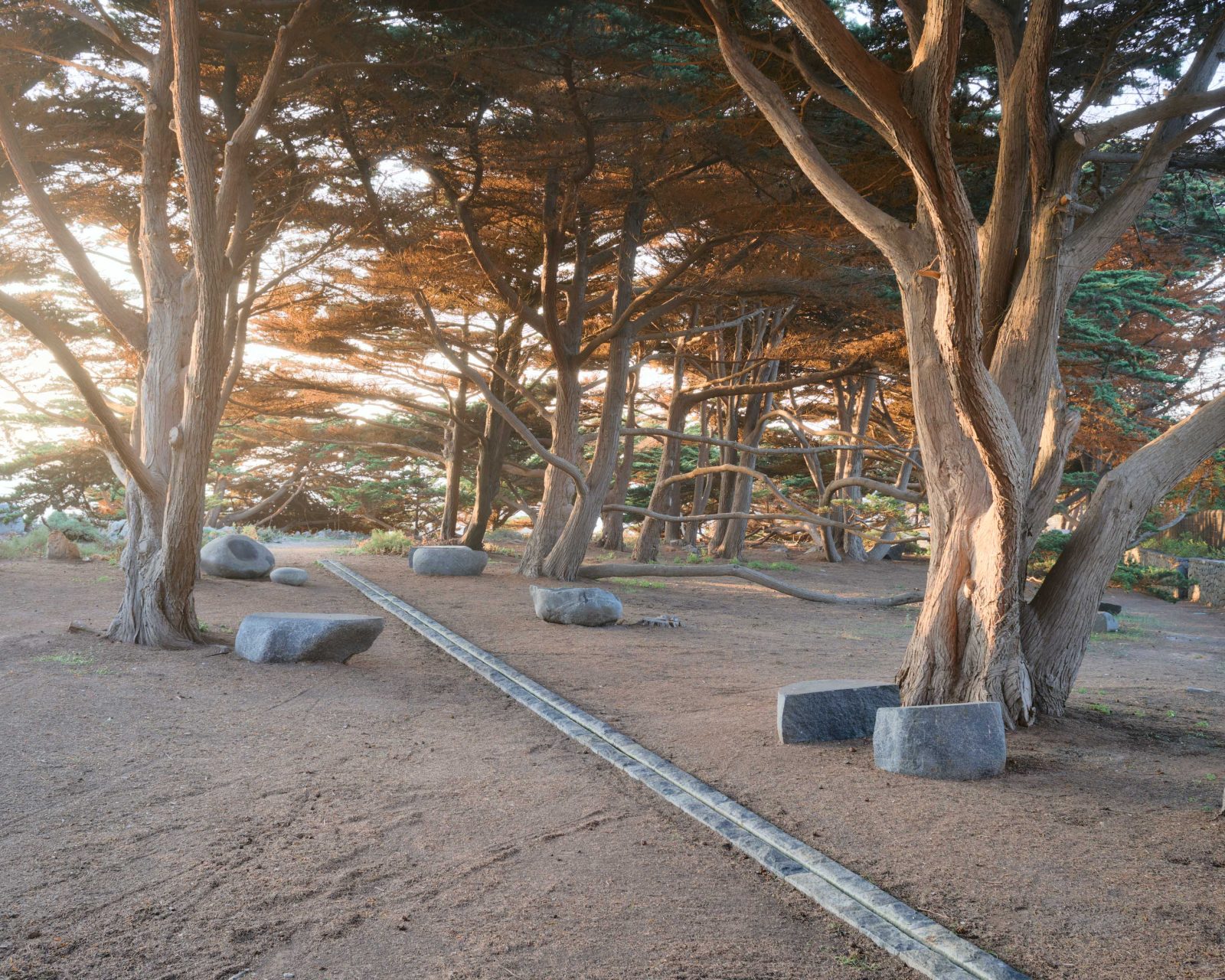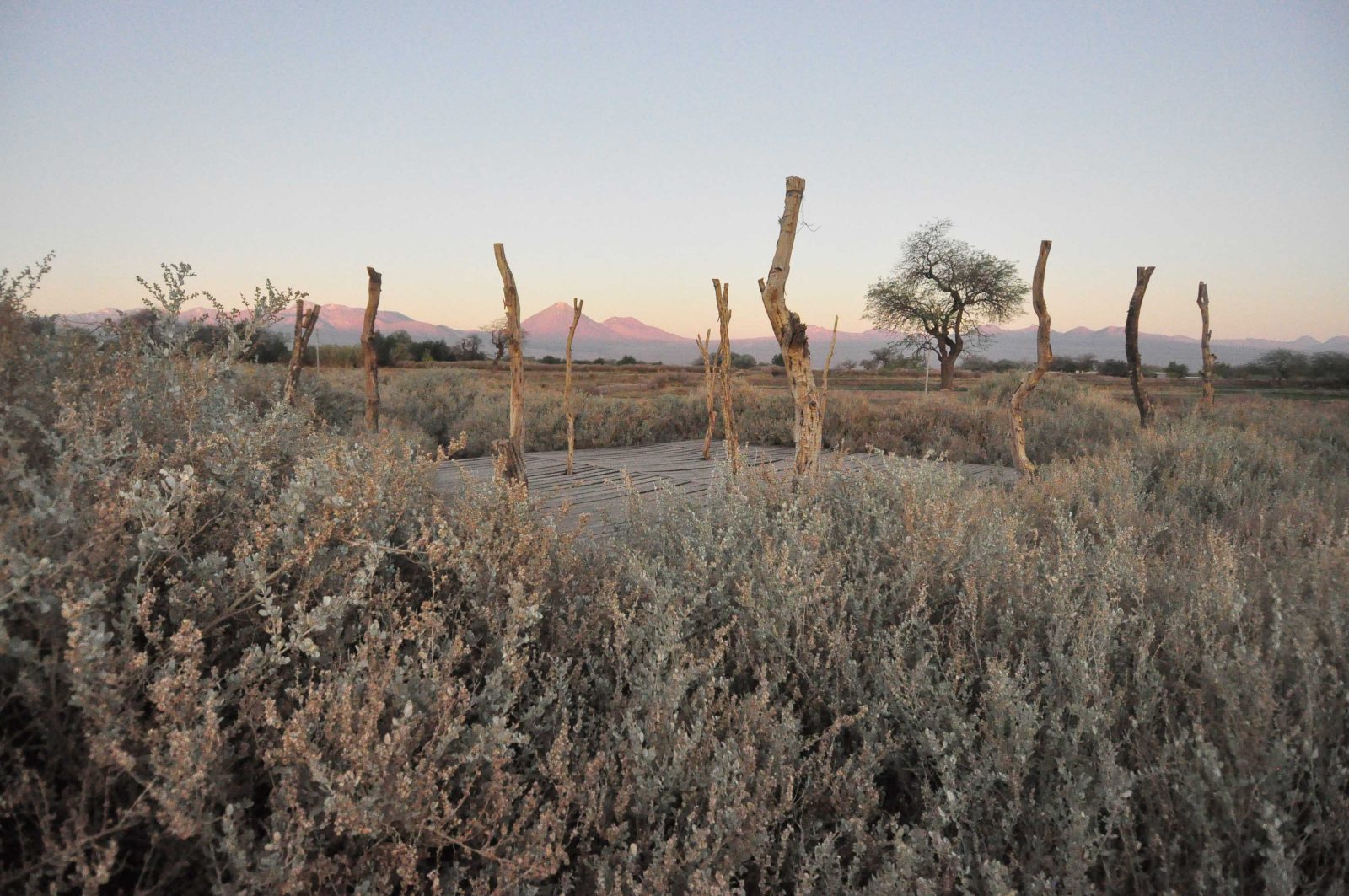Acclaimed Chilean landscape architect Teresa Moller chats with Georgina Reid. The post Teresa Moller: Poet of Place appeared first on Wonderground.

Chilean landscape architect Teresa Moller is a poet of place. Over the past thirty-five years, word of her work has trickled across the world. Quiet, spare, mysterious. Her work stands alone in a place that is and isnít design. It is somehow more.
ĎI work with nature as my partner,í she tells me. The partnership has taken her from the Atacama Desert, where she and her studio worked with existing plants and agricultural structures to create a landscape at the Hotel Tierra Atacama that speaks only of place; to the Venice Biennale, where she utilised quarry offcuts to form a series of resting points along the city foreshore titled Catch the Landscape, intended to bring Ďvalue to the existence of the landscapeí; to a project in the forests of Chileís south where Teresaís only landscape intervention was a water-channel made of fallen tree trunks running through the property.
[Teresa will be speaking at the Australian Landscape Conference on March 17-21, 2023. The conference is nearly sold out, so if you want to hear more from Teresa, get in quick!]
 Teresa Moller. Photo: Chloe Humphries.
Teresa Moller. Photo: Chloe Humphries.
And then there is Punta Pite, on Chileís western coast. Teresaís brief was to create a pathway along the coastline as part of a larger project for a private condominium development. But how do you make a path in a place that already speaks so strongly? You donít. ĎIf the rock wants you to walk on it, you do not need a path,í she says. Instead, a series of small stone interventions were made. Hints, rather than instructions. ĎThe fact that itís a discontinuous path makes you look for directions or signs in the landscape Ö Sometimes, it is absolutely clear where to go, to know where you are. And sometimes you have to search for clues, like in life.í There is no need, she says, to intervene when it is not necessary.
Georgina Reid: Youíve said that Ďlife brought me to work with nature because I couldnít do anything otherí. How did this come to be?
Teresa Moller: I am a very good example of somebody who is successful, but has difficulties being in the system, accepting things the way they are. I was always questioning everything, and doing things the way I thought they should be done. That brings a lot of problems in the system, you see? Because I did it my way very deeply.
GR: Were your parents free-thinking, or were you the black sheep?
TM: I am totally the black sheep. My parents were Catholic, and they were very, very fanatic. I always say I had enough of religion in the uterus of my mother. So, from there on, I came out and I say I had enough [of religion], this is it. So please let me go on my way. But also, my father was somebody who was very much connected to nature, he went to nature to save himself too.
GR: And did you grow up in Santiago?
TM: In Santiago, yes. But I grew up outside Santiago in a house, it was a very farm-like place and my everyday life was outside in the garden. So, I came from school, where I felt very restricted because it was a religious school, and I spent afternoons under the trees. I felt totally good, fine, protected. It was my place for solving the problems I had. My family was really hard. I think, without knowing, I stayed under the trees to save myself.
GR: Itís interesting how often our bodies save us, like as you say you went to the trees, not because your mind told you to, but because you had to, intuitively. It makes so much sense to hear you say this, because it comes through very strongly in your work Ė this intuitive sense for place, a knowing that is bodily not necessarily intellectual.
TM: You know, I have no studies Ö
GR: No university study?
TM: Not that way I should do it, you see? I took the other way. I get bored in classes. I fight the teacher. And I say thatís not true, why do you say that? I am really, I donít know, somebody who is difficult for the system.
I lived in New York for four years and studied at the New York Botanical Garden. It wasnít for me. I did it because I knew that it was going to help me when I came back to Chile, they love people who have studied anything in New York, any place. So when I say I studied in New York, they say, ĎOh, come over here.í So I did that, and then I came back and I started to do projects, little by little. I mean, I have never stopped because they have been asking me for projects all the time. So, Iím really lucky.
 At Hotel Tierra Atacama, in the Atacama Desert, Teresa Moller Studio designed a landscape intervention around
At Hotel Tierra Atacama, in the Atacama Desert, Teresa Moller Studio designed a landscape intervention aroundexisting vegetation such as the algarrobo (Prosopis chilensis) and saltbush, the design celebrating the tenacity
and life-force of plants surviving in one of the driest places on Earth. Photo: Chloe Humphreys.
 Punta Pite. Photo: Filipe Fontecilla
Punta Pite. Photo: Filipe Fontecilla
GR: Has your aesthetic evolved? When you first started like twenty, thirty years ago, what sort of gardens were you doing then?
TM: Most of my best-known projects are ten or twenty years old. And I keep doing the same. Itís becoming the way to work. Today, people are thinking more of keeping and giving value to what is in the place, being very sustainable, and more conscious of the beauty of nature Ė the way it grows, belongs, tastes. Itís not about aesthetics, it has to be much more than that. Itís working with life, itís getting involved with something that helps to understand life.
GR: I think so too. Your work resonates so strongly for me because, you know, youíre really asking the questions. You said recently about beauty, how itís not enough anymore, that there has to be something before or after it. What do you mean by this?
TM: Well, I think that having beauty or aesthetics as a goal is not enough anymore. There are some other values that come much before. Beauty should come after everything is well designed, is well thought out and experienced. I mean, the project should work by itself. And thatís the beauty. Itís not the colours or the textures or the extravagance. It is, for me at least, having people involved and feeling that they are part of that place. We are part of the forest, itís not like weíre here and the forest is there.
GR: So beauty is more of an intangible rather than form?
TM: Today I was asked to do an amazing project in the south of Chile and I cannot start by thinking how can I make it beautiful? No, itís like how I am going to respect that place? How am I going to understand that place? How am I going to touch that place? You see? Itís other questions. And if I work on answering them, and end up with an answer that works for that place, it will be beautiful.
GR: I guess the question in some ways is who is the client? The way you speak, the land and the human have an equal say in what actually happens. Whereas most of the time, itís the human, and the land is the blank canvas or the backdrop.
TM: Yes, thatís very interesting what you say. Itís like we see each other as two parts, different. So, then we walk on top land as if we were the owners of it. But, actually, we are like this [clasps hands together, linking fingers], we are in the same position in life. If we donít understand that, then we never will find a way to respect land.
GR: Yep. I guess the other thing that I think is very interesting, is that weíre all inspired by nature, but in design thereís quite a difference between re-creation and response. Your work is like a conversation rather than a replication.
TM: Yes. Many times, I say in my projects that this part is not going to be touched, we will leave it the way it is because itís the best way it can be. And we will walk on top of this grass, for instance, and have the feeling of the place the way it is. We donít want to change it. People are still thinking of having what the others have, they want to make wildflower meadows like the Americans, you see? Itís like you never think what you have is the best you can have.
GR: So your job then becomes helping people see what they already have?
TM: Yes, and it takes a lot of time, energy, and explaining when weíre talking to somebody who really wants to have a garden more beautiful than the garden next door. Itís difficult.
 Hotel Tierra Atacama, in the northern Chilean town of San Pedro. Photo: Chloe Humphreys.
Hotel Tierra Atacama, in the northern Chilean town of San Pedro. Photo: Chloe Humphreys.
GR: You mentioned in a lecture you did at the Harvard Graduate School of Design that you spend a lot of time thinking about line and landscape. And your project at Punta Pite is very much about line. Can we talk about lines please?
TM: At Punta Pite, the line came first, and then I thought about it [laughs]. I was in this place, and I said, what should I do here, I canít do anything because itís so beautiful, and I did a line to cross it, a path, and then I looked at it. It works so well, I canít understand why.
So I started to think why the line works so well. And I said to myself, I am always looking at the lines in the sky of the airplanes, I am in love with train lines in the landscape. Itís an obsession in my life. You see a fence on a landscape and it is amazing how it works. I donít know, itís like the line represents the human mind and it represents the simplest way of going from one place to the other. And since we cannot try to be like nature, because it becomes really horrible, I think itís about simplicity and rationality, itís about the way humans have worked or touched nature from the very beginning; by irrigation, by walking.
 Punta Pite. Photo: Filipe Fontecilla.
Punta Pite. Photo: Filipe Fontecilla.
 Punta Pite. Photo: Pascale Mondion
Punta Pite. Photo: Pascale Mondion
GR: Teresa, your work reaches beneath the conceptual to the essence of things which is so powerful. Thereís a truthfulness to it. Is there a kind of spiritual undertone or thread that connects your thinking?
TM: Well, I was born asking myself, ĎWhat is all this about?í
GR: Same.
TM: Can you explain to me what is this about? I can tell you, I havenít found any answer but being nature. So this is my answer. Everything is in that answer. I belong to something, I am part of something, I am not a unique intelligence on top of society directing the world. The only thing I know is I have no control. You see, every day it becomes more clear that there is no control. Itís the way it is. So thatís what I think, Iím trying to understand.
GR: Thatís all you can do really. And also accepting the impossibility of ever actually understanding everything!
TM: We will never understand. People think that they understand everything. But still, it came to COVID-19 and we were all looking at each other saying what happened? We were in control of everything. I keep seeing your plants behind you on the screen. I find it is so beautiful they come back into our homes and surround us. All the time reminding us who we are. You know, I feel myself very much like plant material.
GR: Youíre a poet.
TM: Or crazy.
GR: No, a poet. Thank you, Teresa.
Ė
This is an edited excerpt of a long-form interview first published in Wonderground Issue Three. Purchase the print issue to read the full interview.
Teresa Moller will be speaking at the Australian Landscape Conference (Melbourne, March 17-21, 2023). Find out more about the conference, and the incredible line-up of speakers, HERE.
The post Teresa Moller: Poet of Place appeared first on Wonderground.









